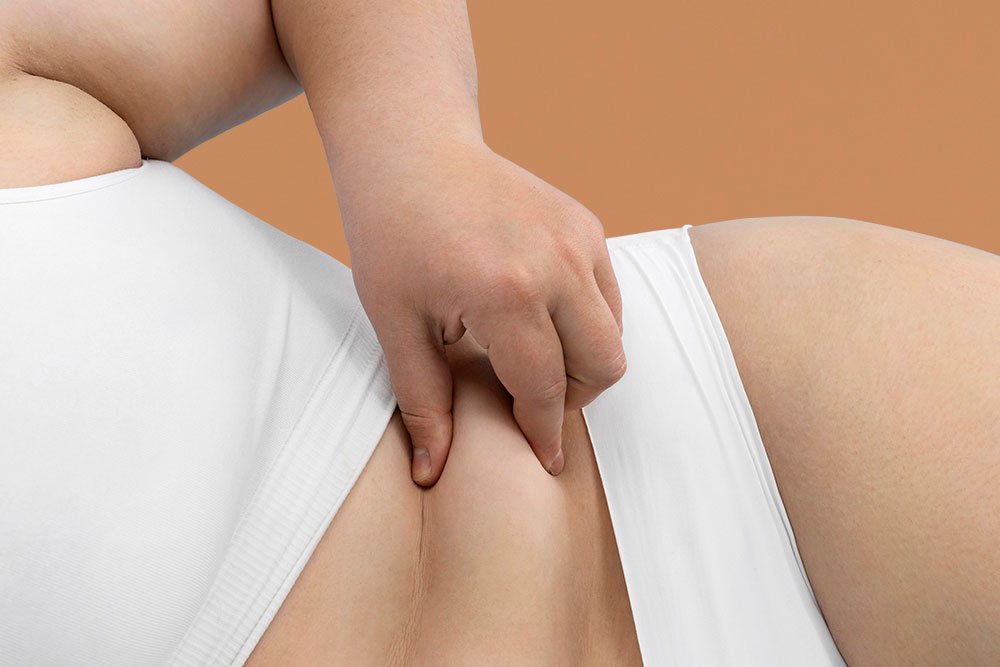
Targeted Fat Reduction vs. Overall Weight Loss: What Works Best

Targeted Fat Reduction vs. Overall Weight Loss: What Works Best
In today’s wellness and fitness world, many people equate success with what the weighing scale shows. A lower number is often seen as a victory. But in reality, the scale only tells part of the story. You may be working hard on your diet and exercise but see minimal change on the scale. Conversely, you might notice your clothes fitting better, or your body looking more toned and sculpted, even if your weight hasn’t dropped significantly. This is where understanding the difference between inch loss and weight loss becomes crucial.
At Midas Wellness Hub, we frequently guide clients who feel frustrated because traditional weight loss numbers do not reflect their visible progress. The goal of this blog is to help you understand the distinction between inch loss and weight loss, why both matter, and how combining treatments, diet, and lifestyle changes can help you achieve optimal results.
What Is Weight Loss?

Weight loss is the reduction in overall body weight, usually measured in kilograms or pounds. It includes a combination of fat, muscle, and water weight. Traditional approaches to weight loss focus on creating a calorie deficit, burning more calories than you consume.
How Weight Loss Happens:
1. Calorie Deficit: Consuming fewer calories than your body needs forces it to use stored fat for energy.
2. Exercise: Cardio, strength training, and high-intensity interval training (HIIT) help burn calories and improve metabolism.
3. Diet Changes: Reducing sugar, refined carbs, and processed foods while increasing protein and fiber intake.
4. Lifestyle Factors: Adequate sleep, stress management, and hydration influence how effectively the body loses weight.
5. Medical Factors: Hormonal imbalances, thyroid issues, or metabolic disorders can affect weight loss.
Limitations of Weight Loss:
While weight loss is important for overall health, it doesn’t always correlate with changes in appearance. For example:
- Rapid weight loss can lead to loss of muscle mass instead of fat, leaving the body softer or less toned.
- Water weight fluctuations can make the scale unreliable from day to day.
- The scale doesn’t differentiate between fat loss, muscle gain, or water retention.
Clothes may still feel tight even after losing several kilograms if fat distribution hasn’t changed.
In short, weight loss is a health-focused measure, but it doesn’t fully capture aesthetic improvements or body shape changes.
What Is Inch Loss?
Inch loss refers to the reduction in body measurements in specific areas like the waist, hips, thighs, and arms. Inch loss happens when fat layers decrease, muscles tone up, or the body is reshaped through treatments or lifestyle changes. Unlike weight loss, inch loss focuses on visible, measurable changes in body shape rather than just numbers on a scale.
How Inch Loss Happens:
- Targeted Fat Reduction: Techniques like cryolipolysis, radiofrequency therapy, and laser lipolysis target specific fat deposits to reduce their size.
- Muscle Toning: Strength training increases muscle mass, which tightens and sculpts the body.
- Collagen Stimulation: Treatments like EndoLift or RF therapy stimulate collagen, improving skin elasticity and firmness.
- Lifestyle Changes: Balanced nutrition, regular workouts, and functional medicine approaches optimize metabolism and support inch loss naturally.
Benefits of Inch Loss:
- Improved Fit: Clothes fit better even if the scale hasn’t changed much.
- Toned Appearance: Focuses on sculpting and firming specific areas.
- Boosts Confidence: Visible results encourage continued lifestyle changes.
- Sustainable: Inch loss often results from targeted treatments combined with lifestyle habits, making it more lasting than crash diets.
Key Differences Between Inch Loss and Weight Loss

Although related, inch loss and weight loss differ in several ways:
- Focus: Weight loss targets the number on the scale; inch loss targets visible changes in body shape.
- Composition: Weight loss includes fat, muscle, and water; inch loss focuses primarily on reducing fat and tightening the skin.
- Methods: Weight loss comes from calorie restriction, exercise, and lifestyle adjustments; inch loss often combines these with targeted treatments and body sculpting procedures.
- Results: Weight loss improves health markers like cholesterol, blood sugar, and blood pressure; inch loss improves aesthetics, confidence, and clothing fit.
Many people achieve inch loss without significant weight loss, especially when fat is replaced by denser muscle tissue. This can be frustrating if you rely only on the scale for motivation.
Why Inch Loss Without Weight Loss Is Possible
Consider this example:
- A client starts a strength training program while maintaining a healthy diet. Over time:
- Fat in the abdominal area reduces.
- Muscle tone increases in the arms and legs.
- Overall body measurements decrease.
The scale may show only a 1–2 kg reduction, but visually, the body looks leaner, firmer, and more proportionate. This is why inch loss is often a more reliable indicator of body transformation, especially for those who want toning and shaping along with fat reduction.
Non-Surgical Treatments for Inch Loss at Midas Wellness Hub
At Midas Wellness Hub, we combine advanced technologies with functional medicine and personalized care to achieve inch loss without surgery.
1. Cryolipolysis (Fat Freezing)
A non-invasive procedure that freezes stubborn fat cells, which the body naturally eliminates. Commonly used for belly, thighs, and arms.
2. EndoLift Laser
A cutting-edge laser treatment that reshapes the body, tightens skin, and stimulates collagen for long-term firmness.
3. Radiofrequency (RF) Therapy
Uses controlled heat to reduce fat layers and tighten sagging skin. Ideal for flabby arms, love handles, and double chin areas.
4. Ultrasound Cavitation
Employs ultrasound waves to break down fat cells, gradually reducing circumference in targeted areas.
5. Body Wraps and Detox Therapies
Enhance circulation, reduce bloating, and give temporary slimming effects, complementing other treatments.
Functional Medicine and Its Role in Inch Loss

Functional medicine addresses underlying causes that traditional diets or workouts might miss:
- Hormonal Imbalances: Issues like thyroid dysfunction, PCOS, or menopause can make fat loss difficult.
- Nutritional Deficiencies: Lack of protein, fiber, or micronutrients can slow metabolism.
- Gut Health: Poor digestion or gut inflammation can hinder fat loss and lead to bloating.
- Personalized Lifestyle Plans: Combining diet, exercise, and non-surgical treatments ensures safe, sustainable results.
By addressing root causes, inch loss becomes more consistent and long-lasting.
Supporting Inch Loss and Weight Loss at Home
1. Hydration: Water is essential for metabolism, digestion, and fat elimination.
2. Balanced Diet: Focus on high protein, complex carbs, and healthy fats.
3. Strength Training: Builds lean muscle, increases metabolism, and reshapes the body.
4. Sleep and Stress Management: Poor sleep and stress can increase cortisol, promoting fat storage.
5. Consistency: Inch loss requires patience and steady effort.
6. Follow Expert Guidance: Combining professional treatments with healthy habits accelerates results.
Choosing Between Inch Loss and Weight Loss
Decide based on your personal goals:
Want to improve health markers like blood pressure, cholesterol, and sugar levels? Focus on weight loss.
Want to look toned, sculpted, and fit into your favorite clothes? Focus on inch loss.
Most clients benefit from a combination of both, which is why Midas Wellness Hub creates personalized programs integrating diet, exercise, functional medicine, and advanced treatments for the best outcomes.
Final Thoughts
While weight loss and inch loss are interconnected, they serve different purposes. Weight loss is primarily about health, while inch loss is about aesthetics and shaping. Achieving both ensures not only a healthier body but also a more confident appearance.
At Midas Wellness Hub, our holistic approach combines:
- Personalized diet and nutrition plans
- Functional medicine assessments
- Advanced non-surgical treatments like EndoLift, cryolipolysis, and RF therapy
- Lifestyle coaching for sustainable results
By understanding the difference between inch loss and weight loss, you can set realistic goals and track progress more effectively, whether your priority is health, body shaping, or both.
